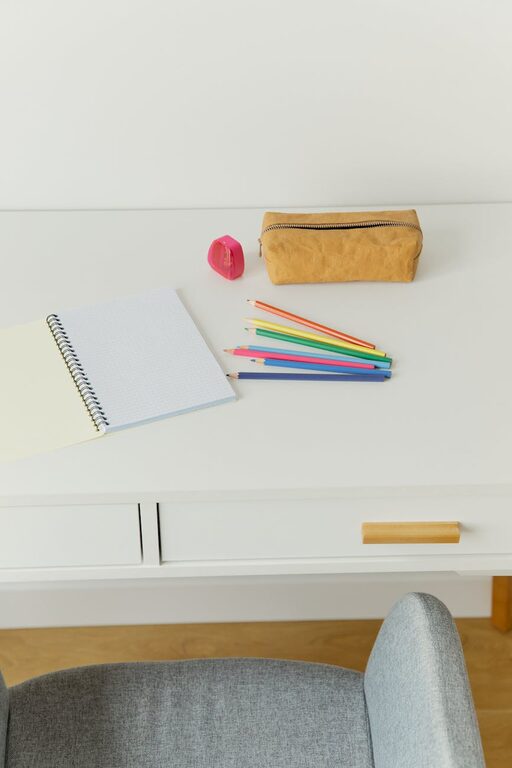Choosing the right notebook might seem like a simple task, but if you’ve ever bought a notebook only to have it gather dust, you know it’s not always that straightforward. Whether you want to jot down ideas, plan your days, or keep a journal, picking a notebook that fits your style and needs will inspire you to use it regularly. Here’s how to find a notebook you’ll actually enjoy and make part of your routine.
Understand Your Purpose
Before shopping, spend a moment thinking about how you plan to use your notebook.
– Journaling: Do you want to capture daily thoughts or practice gratitude?
– Work or School: Will it be used to take notes, organize tasks, or sketch ideas?
– Creative Projects: Are you keeping a bullet journal, planner, or sketchbook?
Knowing your primary use will guide you when selecting features like size, layout, and paper quality.
Choose the Right Size
Notebooks come in several sizes, and choosing one depends on portability and writing space needs.
– Pocket-sized (A6 or smaller): Easy to carry everywhere, great for quick notes or lists.
– Medium (A5): Popular choice; balances portability with ample space for notes.
– Large (A4 or bigger): Suitable for more detailed work, project planning, or sketching.
If you want to take your notebook everywhere, a smaller size is best. But if you plan to work mostly at a desk, a larger notebook might help keep things organized.
Pick Your Preferred Paper Style
The internal layout can affect your writing experience. Consider these common options:
– Lined: Ideal for writing, journaling, or note-taking.
– Blank: Perfect for sketching, brainstorming, or creative freedom.
– Dot Grid: Versatile choice, combining structure and openness, popular for bullet journaling.
– Squared/Grid: Helpful for math, graphs, or technical drawings.
Think about the type of notes or drawings you’ll make most often to decide what paper style suits you best.
Decide on Binding and Cover Type
The notebook’s binding and cover affect its durability and usability.
– Spiral Bound: Lays flat easily and folds back on itself, great for hands-on note-taking.
– Perfect Bound (glued spine): Sleek and sturdy but may not open flat.
– Hardcover: Provides extra protection, good for frequent use or travel.
– Softcover: Lightweight and flexible but less durable.
Choose a style that fits how you’ll carry and use your notebook. A hardcover is ideal if you throw it in a bag often; spiral bound can be more comfortable when writing on small surfaces.
Paper Quality Matters
Paper thickness and texture can affect how your pen or pencil performs.
– Thickness (measured in GSM): Higher GSM (like 80-100) means thicker paper which reduces bleed-through if you use markers or fountain pens.
– Texture: Smooth paper works well with ballpoint or gel pens, while slight texture suits pencils and charcoal.
– Ink Compatibility: If you use ink-heavy pens, look for notebooks designed to prevent smudging and bleed-through.
Testing paper beforehand or reading reviews can save you from frustration later.
Consider Additional Features
Some notebooks come with extras that might enhance your experience:
– Page Numbers: Useful for indexing and organizing.
– Perforated Pages: Make tear-outs easy and neat.
– Built-in Pockets: Handy for storing notes, receipts, or stamps.
– Ribbon Bookmark: Helps you quickly find your place.
– Elastic Closure: Keeps your notebook securely closed.
Think about which features will support your workflow and encourage regular use.
Set a Budget
Notebooks come in a wide price range.
– Basic notebooks: Affordable and often disposable.
– Premium notebooks: Made with quality materials, they usually cost more but last longer.
Investing in a slightly better notebook can motivate you to write and keep your notes organized, but there’s no need to overspend. Finding a balance between quality and price works best.
Personalize to Inspire
Sometimes a notebook’s look can motivate you to use it.
– Choose covers or designs that reflect your personality or inspire creativity.
– Add stickers, labels, or customized covers.
– Use colored pens, washi tape, or other accessories for fun and organization.
Personal touches make your notebook feel like your own special space.
Test Before Committing
If possible, visit a store to flip through different notebooks or order a few style samples online. Pay attention to how the notebook feels in your hand and how your pen works on its pages. That way, you avoid buying a notebook that doesn’t suit your preferences.
—
Final Thoughts
Choosing a notebook you’ll actually use is about matching its features with your needs and style. By considering purpose, size, paper type, binding, and extras, you’ll find a notebook that’s not just functional but also enjoyable. Remember, the best notebook is one that fits your workflow and motivates you to jot down your thoughts, plans, and ideas every day. Happy notebook hunting!

